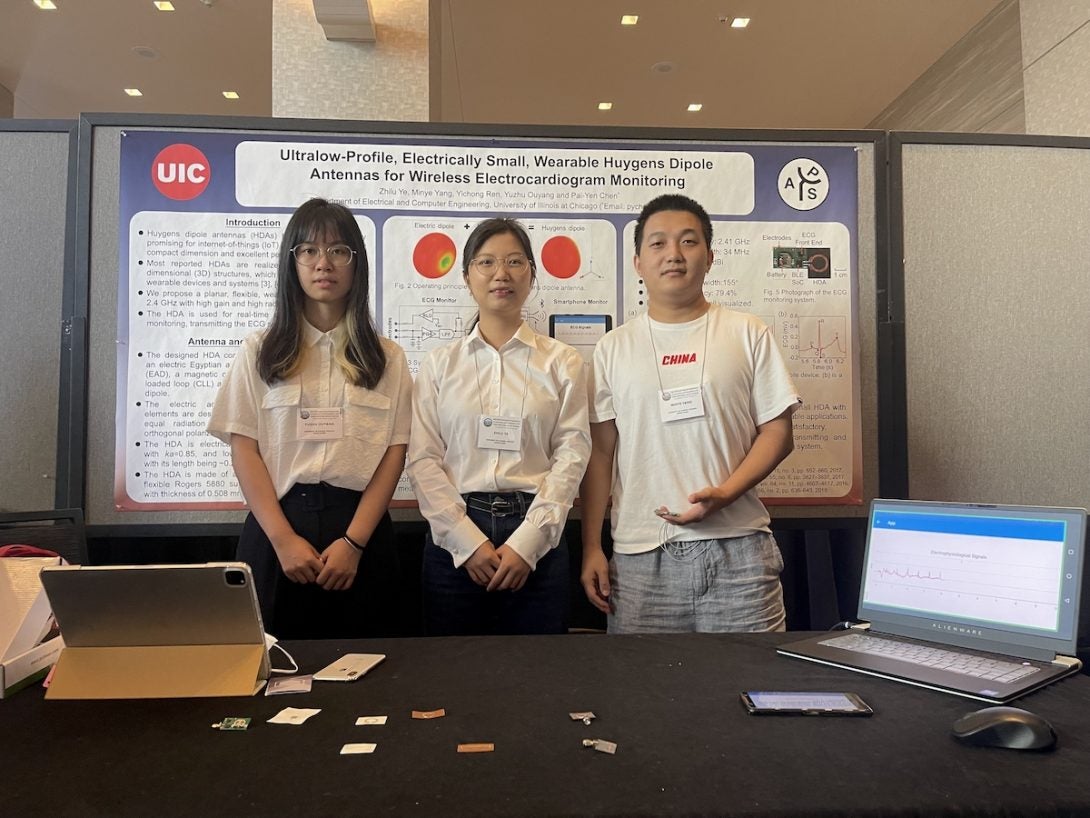Students take home second place prize for wearable heart monitor
Students take home second place prize for wearable heart monitor

A team of student researchers from the Andrew Electromagnetics Laboratory took home the second-place prize in the student design contest from the IEEE Antennas and Propagation Society for their wearable heart monitor project.
The team included Zhilu Ye, Yichong Ren, Minye Yang, and Yuzhu Ouyang, and was advised by Associate Professor Pai-Yen Chen. Yang and Ye are third-year PhD students, and Ren and Ouyang are undergraduates.
The 2022 United States National Committee of the International Union of Radio Science was held in Denver and attended by almost 1,500 researchers from over 40 countries. Six teams were selected as finalists including the team from UIC.
Their project, Ultralow-Profile, Electrically-Small, Wearable Huygens Dipole Antennas for Wireless Electrocardiogram Monitoring, involves a wearable monitoring device that performs continuous remote electrocardiogram (ECG) monitoring.
An ECG machine records the electrical signals in the heart, which is used to quickly detect heart problems and monitor the heart’s health. Typically, this test is performed in a medical setting. But, an ECG can only tell you what’s going on at that specific moment. More detailed information can be obtained via continuous real-time monitoring in a wireless manner, which is essential for patient comfort.
The team’s Internet-of-Things (IoT) enabled device consists of a Huygens dipole antenna embedded on an ultrathin, flexible material, almost like a sticker, that attaches to a patient and transmits data to a portable receiver, such as a cellphone, which can then be shared with a medical team.
“The device provides good quality, detailed information of heart rhythm, and can detect heart disorders,” Ye said. “The patient does not need to be in a fixed position; the antenna can transmit data up to 10 meters in an indoor environment.”
Yang said while the prototype they built is not as good as stationary equipment used for ECGs, their proof-of-concept holds promise, and can be improved using novel nanomaterial platforms. They hope to integrate soft materials, such as paper, so the device more closely resembles a tattoo in the future. The team is collaborating with the Laboratory of Soft Materials and Bio-Electronics at the University of Missouri to achieve this goal.
“This work in radio frequency and microwaves is very multidisciplinary–we can develop compact, low-profile radio frequency devices for wireless power transfer, sensors, and medical IoT devices,” Yang said. “UIC is a great university for this research area.”